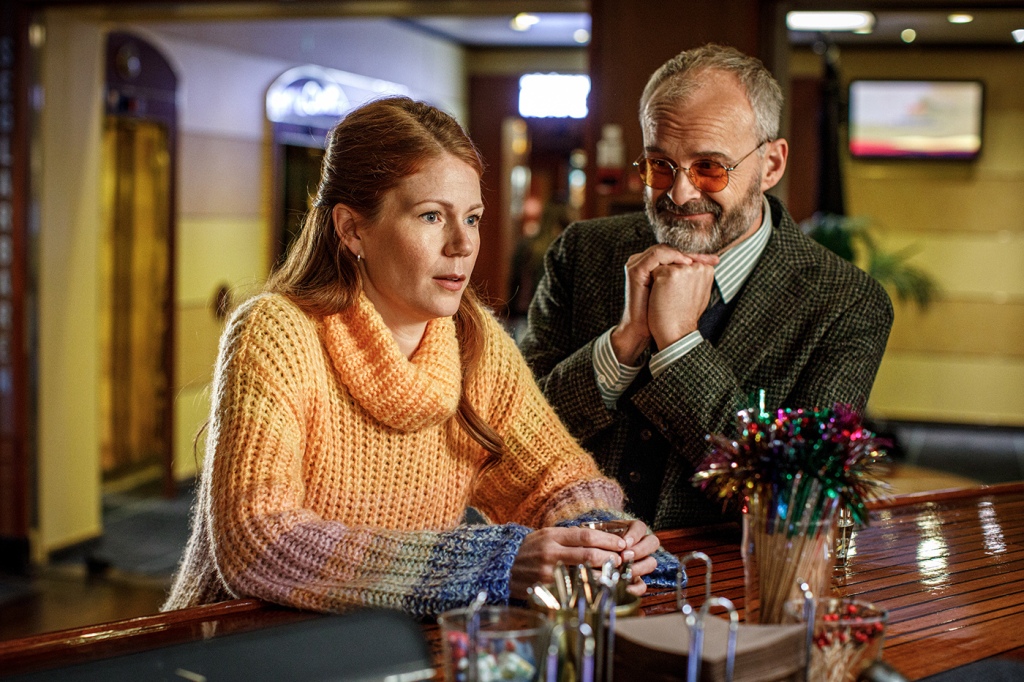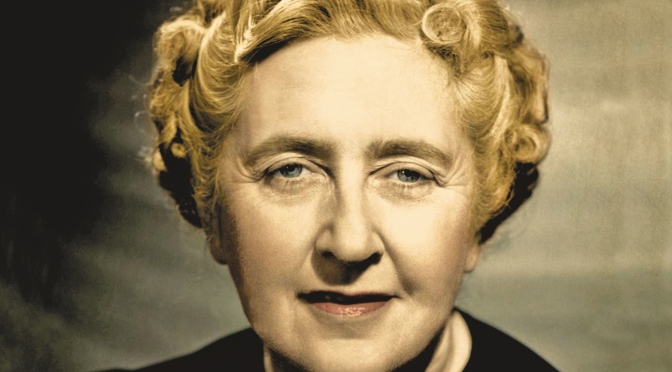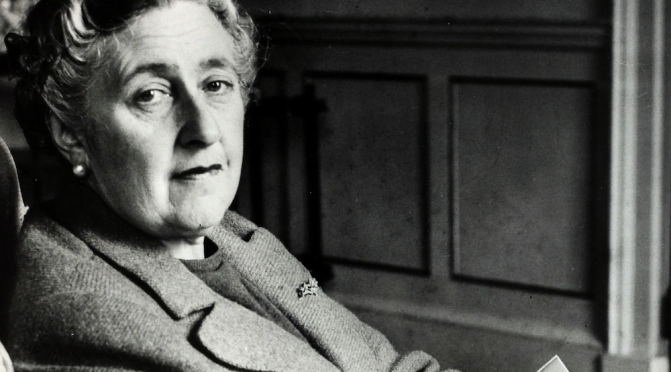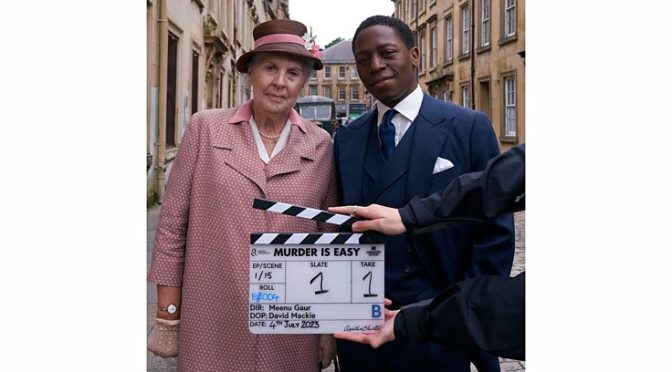Category Archives: Agatha Christie
BBC set for new Agatha Christie adaptation, reports say
REVIEW: Agatha Christie’s Murder Is Easy (S1 E2/2)
REVIEW: Agatha Christie’s Murder Is Easy (S1 E1/2)
BBC One confirms transmission date for Agatha Christie series Murder Is Easy
BBC drops first images from Agatha Christie adaptation
BBC announces brand new Agatha Christie adaptation
SERIES REVIEW Agatha Christie’s Hjerson

Much was made of this Swedish series, based as it is on a fictional character within a fictional story written by the evergreen, late, great Agatha Christie. It’s a strange, perhaps obscure reference point for non-Christie fans, so for their benefit, here’s who Sven Hjerson is. Or was. Or now is.
Hercule Poirot had a mystery novelist friend called Ariadne Oliver, who appeared in six Poirot novels. Just as the real-life novelist had Poirot, Christie also gave Oliver a fictional detective to write about. That detective was called Sven Hjerson.
Such is Christie’s popularity through the ages, it seems any kind of link or character is riper for adaptation.
It is only after you have watched a whole episode that the link with Agatha Christie becomes apparent, but aficionados will definitely make the connection, and should also be able to appreciate how this celebrates the art of her writing – albeit in a rather bizarre manner.

Without spoilers, this series concerns a dysfunctional Swedish reluctant mother (Klara, played by Hanna Alström), who is the main source of new ideas for a ridiculous (although in these days maybe not so ridiculous) reality TV show. She eschews the ‘traditional’ ideas of dragging in children to sell the show, and hits on the idea of making a real-life detective series using the most brilliant (but disgraced and excommunicated) detective to effectively bring Cluedo to life. This is, of course, is Sven Hjerson (Johan Rheborg), who has a lot of skeletons in his closet.
The remainder of the series revolves around Klara enticing Hjerson to join her in investigating seemingly open-and-shut cases, but also explores the early life and idiosyncrasies of both Hjerson and Klara. Klara has an ultra-intelligent daughter who seems destined to be permanently babysat by Klara’s other half, himself an over-the-top megalomaniac obsessed by her need to escape all the maternal duties.
The series is laugh-out-loud funny in parts, particularly the interaction between the two main protagonists, and Klara’s infrequent returns to her former fellow reality show boss to ensure they are still engaged with her ‘project’. The final episode is one of the most brilliantly written denouements I have seen, and will pull your emotions in directions you were not even aware existed.
This really was a surprise hit from the Walter Presents stable. From rather obscure and scant reference material, this has been transformed into a wonderful romp with bizarre stories, and equally bizarre characters.
Brian Parker
Agatha Christie’s Hjerson is available to stream on All4 in the UK
READ MORE: ALL OUR AGATHA CHRISTIE NEWS AND REVIEWS
SERIES REVIEW Why Didn’t They Ask Evans? (S1)

Any new adaptation of an Agatha Christie novel instantly arouses interest, which, of course, is a testament to her cross-generational appeal and unrivalled longevity.
The last time we saw Christie on television, the brilliant Sarah Phelps reworked five of her novels to dazzling effect. Darker, meatier, more grisly and, arguably, more interesting than the cosy crime Christie has become synonymous with, they were nonetheless met with criticism in some quarters.
So this adaptation of one of her lesser-known – and, at least, less celebrated- novels will have the diehard Christieites breathing a huge sigh of relief.
A passion project of Hugh Laurie no less, this good-looking, three-part series is now streaming on Britbox and is bejewelled with not only the magnificent Laurie himself but also the likes of Paul Whitehouse, Conleth Hill, Amy Nutall, Miles Jupp, Emma Thompson and Jim Broadbent.
If that’s not enough to tune in, it also transports us back to the relative cosiness and the amateur sleuthing that has endeared Christie fans to the ITV Marple and Poirot series. There are no liberties taken, no fathomed backstories, and no dark interpretations – this is Christie for the Christie hardcore massive.
As ever with this iteration of Christie, we’re transported back to a rural 1930s England full of fabulous fashion, quaint villages, warm, frothy beer and Lagondas careering around pre-war bucolia.
The action is set a Welsh coastal town, and the story begins when local, butter-wouldn’t-melt vicar’s son and heartthrob Bobby Jones (Will Poulter) – caddying for the local doctor on a gold course – hears a commotion and goes to investigate. He finds a man who has fallen from the cliffs onto the beach below, and clambering down, finds him – naturally – at death’s door. His last words… a question: “Why didn’t they ask Evans?”
This trauma coincides with the return of breezy childhood friend Lady Frances Derwent (all berets, high-waisted trousers and posho attitude and played to perfection by Lucy Boynton), who may or may not be in love with young Bobby dazzler. Still, they have some catching up to do, and the frisson is very obviously still present between them, despite Frankie being away in London and cementing herself in the capital’s circle of bright young things.
What’s bringing them back together is this mystery – who was this dashed chap that snuffed it on the rocks and what in blazes does “Why didn’t they ask Evans?” mean. Frankie, displaying the kind of insouciance and boredom only socialites can, senses an opportunity for adventure, and despite the slightly star cross’d nature of their relationship, Bobby – fuelled by redoubtable morality – decides to go along for the ride.
However, they are not the only ones interested in the death of Alan Carstairs – a cartoonish but deadly villain (dressed wraith-like all in black and wearing a bowler hat) is stalking Bobby in the village and causing some havoc.

Soon, Bobby and Frankie are off on their adventure (like Tommy and Tuppance elsewhere in the Christie oeuvre) – first to London, and then on to Hampshire – to hunt for Roger Bassington-ffrench, a man Bobby encountered at the scene of Carstairs’ death. To infiltrate his posh family home – a very dysfunctional place it has to be said – they have to concoct a fiendish plan.
And so the story continues, encompassing some shady characters from a nearby mental sanitorium and, of course, plenty of Christie’s patented red herrings. At the heart of it all is a rather convoluted story, but you know that watching and enjoying an Agatha Christie is not just about the story – it’s about the journey, it’s about the guessing game and it’s about the presentation of suspects and reveal of the perpetrator.
And this story is quite well told. Laurie – who adapted it himself – is obviously in his element here (he’s already appeared in Jeeves and Wooster from the same period, lest we forget) and has a nice feel for the phrasing and vernacular of the time (although it’s not too ‘gosh, jolly hockey sticks’). He also imbues it with the dry, witty humour he’s become known and loved for (there are very nice gags in among the mystery). And when it comes to direction, he shows a bit of flair and some interesting and confident flourishes.
But Why Didn’t They Ask Evans? isn’t one of Christie’s least lauded books for a reason – yes, there’s everything you want from a Christie story, and Laurie manages to ask some questions about class and class division in society (as well as a sweary, tonal shift for a great a Daily Mail joke and dig), but the whole thing could do with a bit more pep. In fact, I’d go so far to say that this story could – and perhaps should – have been told in a feature-length special. It also noticeably skips a few things too, leaves a few ends untied and the denouement is a little bit messy.
However, one thing that Why Didn’t Ask Alice Evans? has going for it is Lucy Boyton as Frankie – the absolute epitome of a young Christie heroine. Boynton is full of vim, vigour and irressistible energy. If she isn’t a star already – we only saw her recently in ITV’s The Ipcress File – she certainly will be very soon. A great talent.
For Christie diehards, this is the adaptation they would have been waiting for. Laurie has an obvious love for the period and the material, and it’s a fun, watchable, and, well, traditional Christie exprience.
Paul Hirons
Why Didn’t They Ask Evans? streams in the UK and US on Britbox
READ MORE: ALL OUR NEWS AND REVIEW CONCERNING AGATHA CHRISTIE
Nordic Noir: New Agatha Christie’s Hjerson trailer unveiled
We k now that C More’s Swedish Agatha Christie series – Hjerson – is just around the corner.
And now we have a new trailer.
Based on a fictional character penned by a fictional character Ariadne Oliver, who is a mystery crime writer that appears in a number of Agatha Christie novels, the series is set to start in Sweden on 16th August.
Johan Rheborg will play Sven Hjerson and Hanna Alström will play his ‘sidekick’ Klara Sandberg, a former trash TV producer who successfully pitches a true-life crime show starring Hjerson, who will solve a real crime each week.






